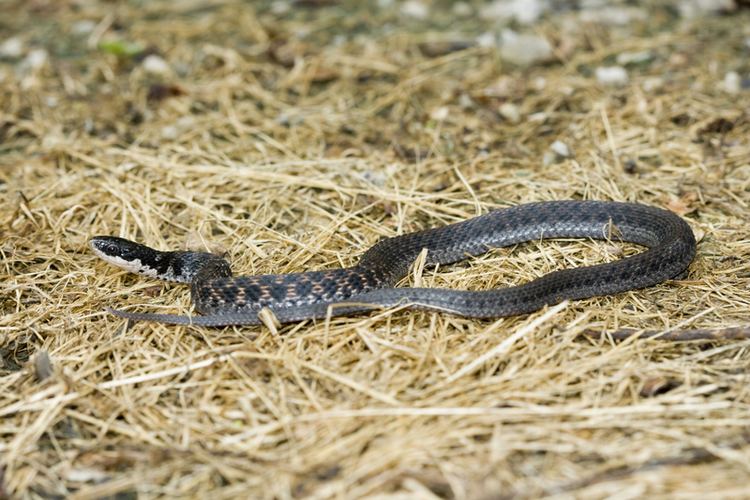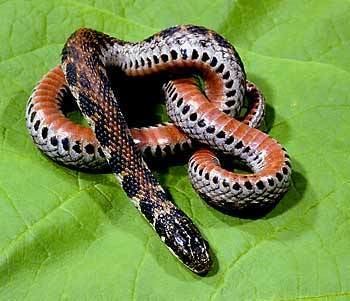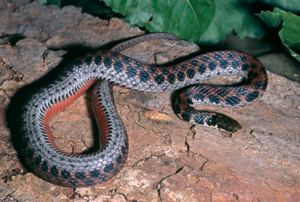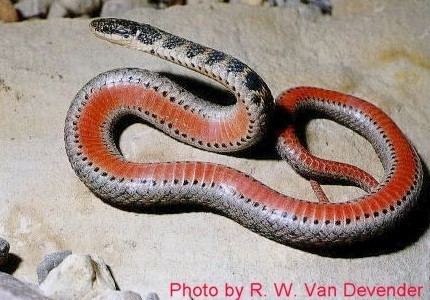Scientific name Clonophis kirtlandii Rank Species | Phylum Chordata Infraorder Serpentes Genus Clonophis Higher classification Clonophis | |
 | ||
Similar Regina, Storeria occipitomaculata, Virginia, Virginia valeriae, Eastern Ribbon Snake | ||
Kirtland's snake (Clonophis kirtlandii ) is an endangered North American species of nonvenomous snake of the subfamily Natricinae, of the family Colubridae. It is the only species in the genus Clonophis.
Contents
- Kirtland s snake release
- Etymology
- Common names
- Description
- Geographic range
- Habitat
- Conservation status
- Diet
- Defensive behavior
- Reproduction
- References

Kirtland s snake release
Etymology

The specific name, kirtlandii, is in honor of Dr. Jared Potter Kirtland, an American naturalist of the Nineteenth Century. The snake was first identified by Robert Kennicott in 1855. Kennicott sent a specimen to Spencer Fullerton Baird, the assistant secretary of the Smithsonian Institution, who offered to publish a description of the animal in Kennicott's name. Baird suggested Regina kirtlandii as a scientific name, as Kirtland had been a mentor to Kennicott.
Common names

Common names for this species include: Cora Kennicott's snake, Kirtland's red snake, Kirtland's water snake, little red snake, Ohio Valley water snake, and spread head.
Description

Kirtland's snake is small and slender. Adults reach a total length (body + tail) of 12-18 inches (30–46 cm). They are grayish brown with a series of large black spots and alternating smaller spots running down each side of the back. The ventral scales are brick red with a prominent round black spot at each outer end. It has 19 rows of keeled dorsal scales at midbody, and the anal plate is divided.
Geographic range
This species is found in Illinois, Indiana, Ohio, southern Michigan, northern Kentucky, and western Pennsylvania.
Habitat
Clonophis kirtlandii inhabits prairie or prairie-like areas. It is usually found not far from a water source, even though it is less aquatic than water snakes of the genus Nerodia which share its geographic range.
Conservation status
The species is listed as endangered in Indiana, Michigan, and Pennsylvania; it is listed as threatened in Illinois and Ohio.
Diet
Kirtland's snake feeds on earthworms, slugs, minnows, salamanders, frogs and toads.
Defensive behavior
When alarmed this snake flattens its entire body to a remarkable thinness, and becomes rigid.
Reproduction
Kirtland's snake is ovoviviparous. Females give birth in August and September. Brood size varies from 4 to 22. Each newborn is 13–17 cm (5-6¾ in.) in total length and averages 1.4 gm in weight.
